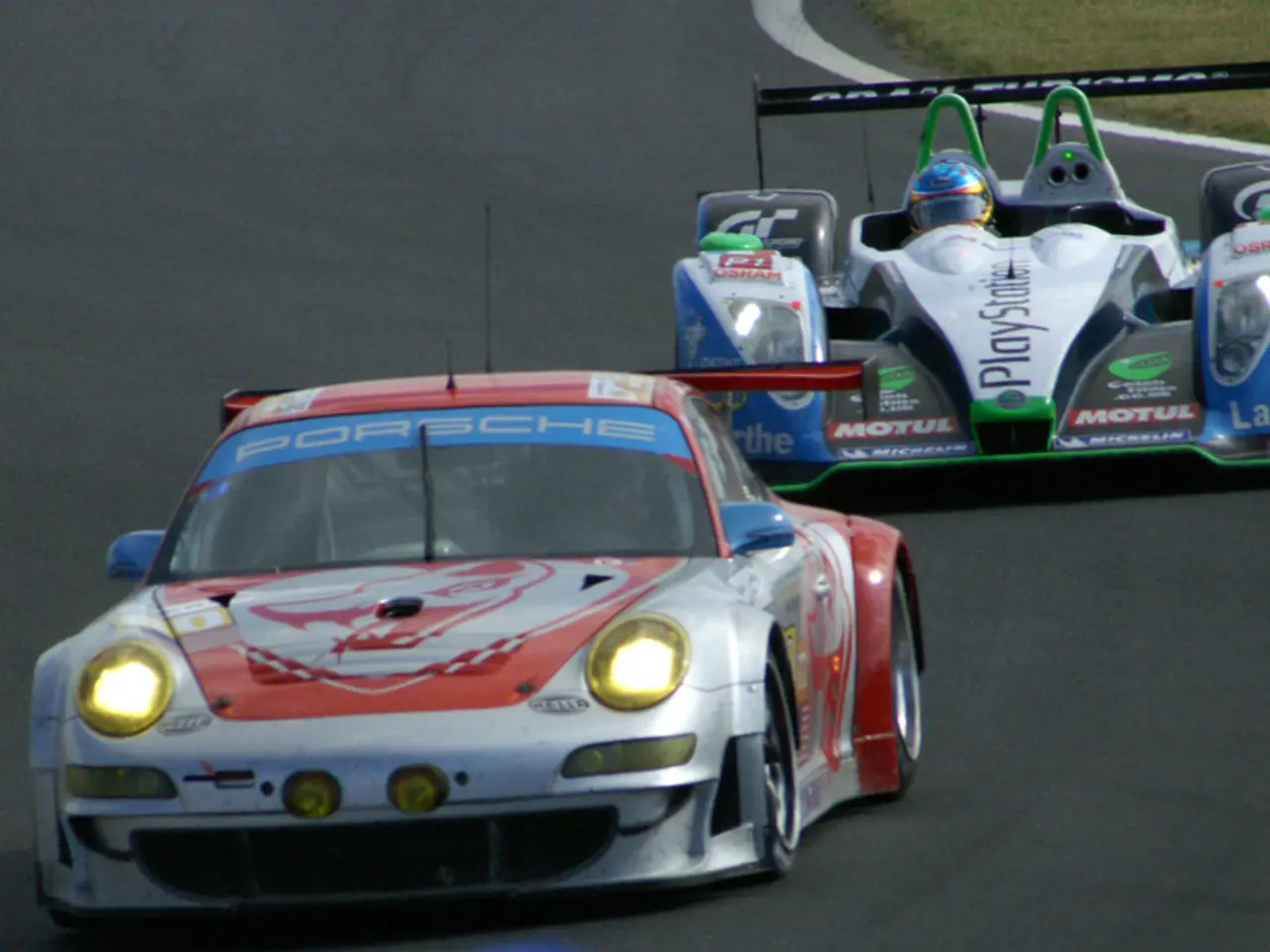Companies Innovate Internal Combustion Engines for Carbon Reduction: Three Firms Advance in Decarbonization Technology for ICEs
Subaru has made a significant stride in automotive engineering with the unveiling of its next-generation e-BOXER hybrid engine. The new powertrain, showcased at the Multipathway Workshop, is a testament to Subaru's commitment to innovation and its unique Boxer engine architecture.
The heart of the new e-BOXER is a 2.5-liter horizontally opposed Boxer 4-cylinder petrol engine, paired with a 90 kW electric motor and a 1.1 kWh lithium-ion battery. The combined system output is approximately 145 kW, delivering improved fuel efficiency and driving range.
The hybrid powertrain uses Subaru's proprietary TH2B Hybrid Transaxle, equipped with a planetary gear set and an integrated secondary electric motor/generator (MG1). This innovative setup achieves a combined fuel economy of around 6.2 liters per 100 km and an impressive driving range exceeding 1,000 km per tank, based on official testing conditions. The e-BOXER also supports towing capacity of about 1,200 kg braked and 750 kg unbraked.
The development goals for the next-generation e-BOXER are focused on significantly improving fuel economy—by roughly 30% over naturally aspirated petrol models—and delivering quiet, refined driving with beneficial all-electric low-speed propulsion. The new engine is a step towards stronger hybridization, offering better efficiency and performance.
Subaru's next-generation e-BOXER engine made its debut with the 2025 model year Subaru Forester Hybrid, marking a progressive step into electrified vehicles for the automaker. The Forester Hybrid with the next-gen e-BOXER engine is expected to underpin future Subaru models as they align with evolving emissions and efficiency regulations.
The e-BOXER engine's compact size is another key aspect, housing the differential, hybrid unit's twin motors, and transmission, all while transferring torque to the rear wheels. This design ensures a smooth and quiet hybrid driving experience, enhancing low-speed electric drive.
Subaru's collaboration with Mazda and Toyota extends beyond the development of the e-BOXER. The three companies are also working together to develop carbon-neutral fuels, reflecting their shared commitment to sustainability.
The competitive spirits of these automakers are evident in their constant technological advancements, often showcased on the racetrack. Chief Technology Officer Fujinuki mentioned plans for a new vehicle in Super Taikyu-the High Performance X Future Concept, revealing greater ambitions for co-creation and competition between the three companies.
In a time when the automotive industry is embracing electrification, the e-BOXER engine represents a rebirth for the age of decarbonization. It's not just about extending the life of Internal Combustion Engines (ICEs), but a new beginning for more efficient, sustainable, and high-performing vehicles.
For a basic explanation of in-line, horizontally-opposed, and rotary engines, refer to the end of this article.
- Subaru's next-generation e-BOXER engine, implemented in the 2025 model year Subaru Forester Hybrid, is a testament to the automotive industry's shift towards electrification, signifying a stepping stone towards sustainable and high-performing vehicles in the finance sector.
- Moreover, Subaru's collaborations in the technology industry, such as the joint venture with Mazda and Toyota to develop carbon-neutral fuels, further underscore the commitment of these companies to finance solutions that prioritize environmental sustainability within the transportation sector.




